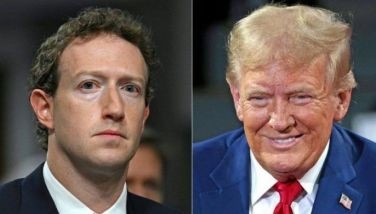What is a social object?

Keith Reynolds, a contributing columnist for Mark Schaffer’s web page, talks to us about social objects. A social object is anything that sparks a conversation between two or more people. It can be tangible, like a cup of coffee, or intangible, such as one’s spirituality. He says: “When you meet a person for the first time, what are the usual questions you would ask?”
• Where are you from?
• What kind of work do you do?
• Do you happen to know so and so?
The reason we do this is what is known as social object theory. Sociologist Karin Knorr Cetina presents a theory that says that you, I, and others depend on objects around which we can socialize. Social networks are not built on person-to-person connections. They’re built on person-to-object-to-person connections.
Influencers, therefore, are NOT the individuals around which people gather. Instead, these individuals’ social objects ARE the influencers because they are what spark connection and conversation.
• When a stranger walks up to someone and inquires about their shoes, the shoes are the social object.
• When two people rant about a specific story in the news, that news story is the social object.
• When people went wild over the issue of community pantry, the community pantry is the social object.
• When people attend, post, or talk about events such as the Olympics or even my Level Up Leadership Master Class, the event is the social object.
The objects are not what’s interesting or important. It is the conversations that happen around them. It is how you build communities, and business is all about building communities.
Keith Reynolds says: Successful brands are social objects. And these brands represent businesses with their communities.
• Nike isn’t a shoe; it’s a community of athletes.
• Harvard isn’t a university; it’s a community of leaders.
• Mayo Clinic isn’t a healthcare provider; it’s a community of physicians.
• Spotify isn’t a streaming service; it’s a community of music lovers.
I am with a Viber group, and the exemplary members contribute their opinions on current events, finance, etc. The topics are the social objects. Members contribute because, in a sense, we are a tribe. Not all are in agreement all the time as there are dissenting opinions and views. But this is healthy because there is engagement and there is conversation. And watch the dynamics: When our “recognized tribe leader” endorses a product or a service, the rest of the tribe is “sold” because the influence is strong. Social objects are everywhere. We wear, eat, drink, post, and even gift them. We drive them, we post them, and we communicate through them. The community formed because of the conversations that take place are our connection to meaning, purpose, and belonging.
Your job isn’t to connect people. People-to-people connections are weak. You may be paying a great deal of money (or stuff) in exchange for having your product or services “posted” in their IG or FB accounts, but influencers are not the individuals around which people gather. Instead, these individuals’ social objects are the influencers because they are what spark connection and conversation.
Remember that your customers are talking and conversing. And so:
How can you elevate and the conversations your customers are having?
• What objects are customers already gathering around to connect and converse?
• Is there a conversation your industry/market should be having with the world?
• How could you amplify and allow those conversations to happen?
• How can you make your product or service a social object?
Artist Hugh MacLeod, proposed the following for creating social objects:
• Make meaning – “The market for something to believe in is infinite.”
• Create a purpose – Help others get clarity on their why.
• Create play – Give people a reason to interact.
• Create a new language – Talk with people in a way they’ve never been talked with before.
• Create share-ability – “Don’t make it easy for people to share your product; make it easy for people to share themselves”
• Push the boundaries of design – Seth Godin’s breakout book Purple Cow was originally packaged in a milk carton.
• Facilitate community – “Turn your product/service into a place where people gather, rather than the thing they buy.”
• Create new context – Help people see the familiar in unfamiliar ways or the unfamiliar in familiar ways.
• Enable meet space – Bring customers together to facilitate discussions.
The conversation that takes place around the products you make, services you provide, the content you write or post are the social objects that influence and not necessarily the number of people you want to connect. Want to be in business? Build your community.
(Francis Kong’s highly acclaimed Level Up Leadership Master Class online will be held from Aug. 25 to 27. Develop your leadership skills that translate into personal, career, and business growth. For inquiries and reservations, contact April at +63928-559-1798 or and for more information, visit www.levelupleadership.ph)
- Latest
- Trending





























